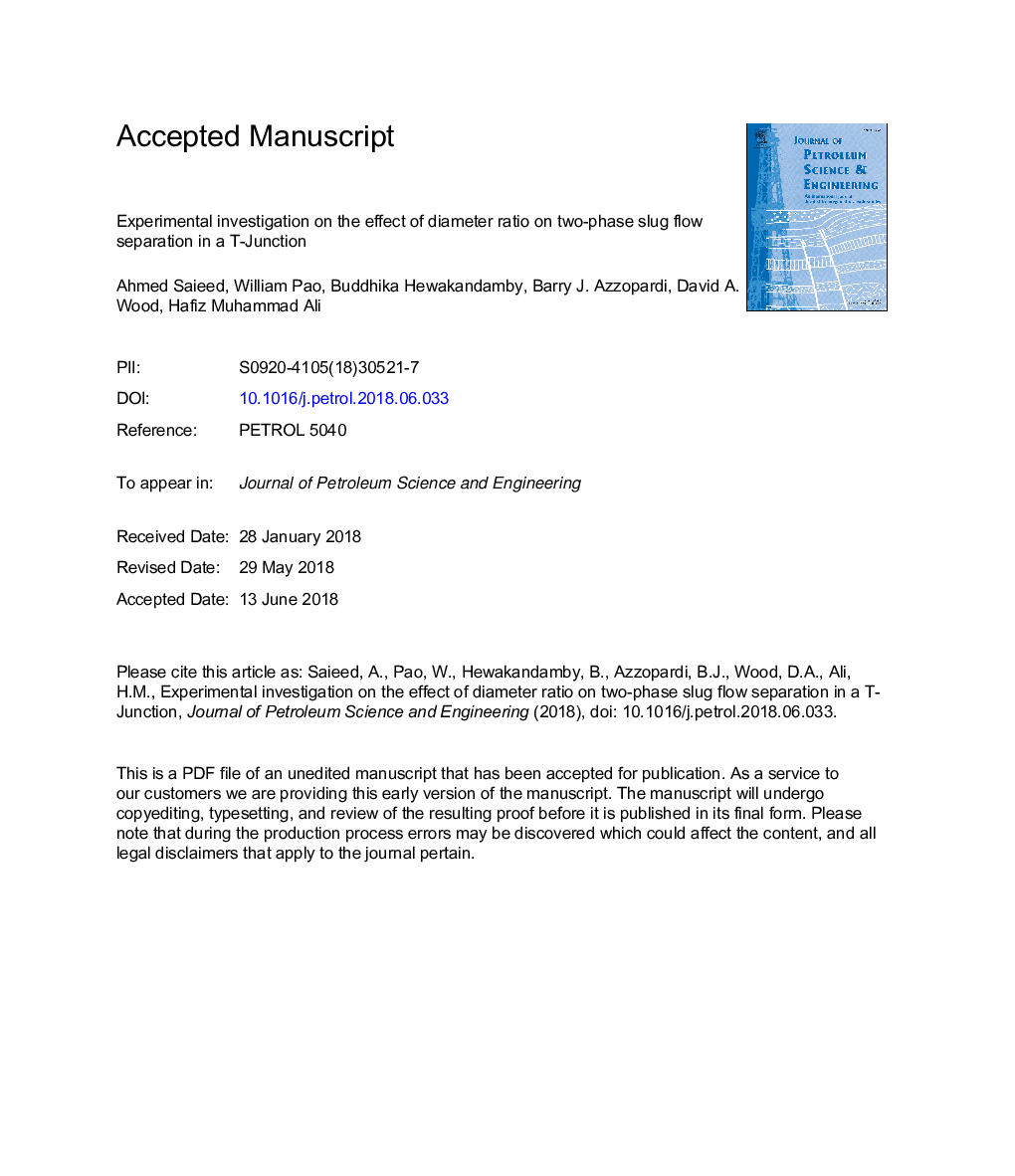| Article ID | Journal | Published Year | Pages | File Type |
|---|---|---|---|---|
| 8124419 | Journal of Petroleum Science and Engineering | 2018 | 50 Pages |
Abstract
T-junctions are often used in offshore platforms to partially separate gas from produced fluids. Poorly designed T-junctions frequently produce very high liquid (oil and/or water) carryovers, causing major issues to the downstream equipment train which is not designed to handle excessive liquid. This paper reports the liquid carryover experiments in T-junctions using five different side to main arm diameter ratios under slug flow regime. The obtained phase separation curves can be divided into two component variables; liquid-carryover threshold and peak liquid carryover. The experiments demonstrate that with a decrease in diameter ratio both of these variables decrease. Yet, for superior multiphase flow separation, a high liquid carryover threshold and a low peak liquid carryover are required. Hence, the generally accepted rule that a reduction in diameter ratio improves the phase separation is revealed to be an over-extrapolated statement. The novel findings of this work are: 1) for optimum flow splitting under slug flow conditions, the diameter ratio should be kept between 1 and 0.67, while the diameter ratio 0.67 was found to be most suitable; 2) two correlations were developed for predicting two-phase slug flow separation in different diameter ratio T-junctions. These correlations offer beneficial guidance and clarifications for a number of oil and gas flowline and pipeline applications.
Keywords
Related Topics
Physical Sciences and Engineering
Earth and Planetary Sciences
Economic Geology
Authors
Ahmed Saieed, William Pao, Buddhika Hewakandamby, Barry J. Azzopardi, David A. Wood, Hafiz M. Ali,
